
Written by:
Matas Kibildis
Head of Growth @ aiclicks.io
Reviewed by:
Rokas Stankevicius
Founder @ aiclicks.io
Last updated:
Oct 16, 2025
Expert Verified
I’ve spent the past few years obsessed with one question: How do you make sure your brand shows up when someone asks ChatGPT for advice, recommendations, or reviews?
Ever since I founded AIclicks.io, it became clear to me that the search habits are changing fast. People no longer type keywords into Google – they’re asking questions straight to AI models. That means your brand’s visibility in ChatGPT answers is no longer nice to have, but a must.
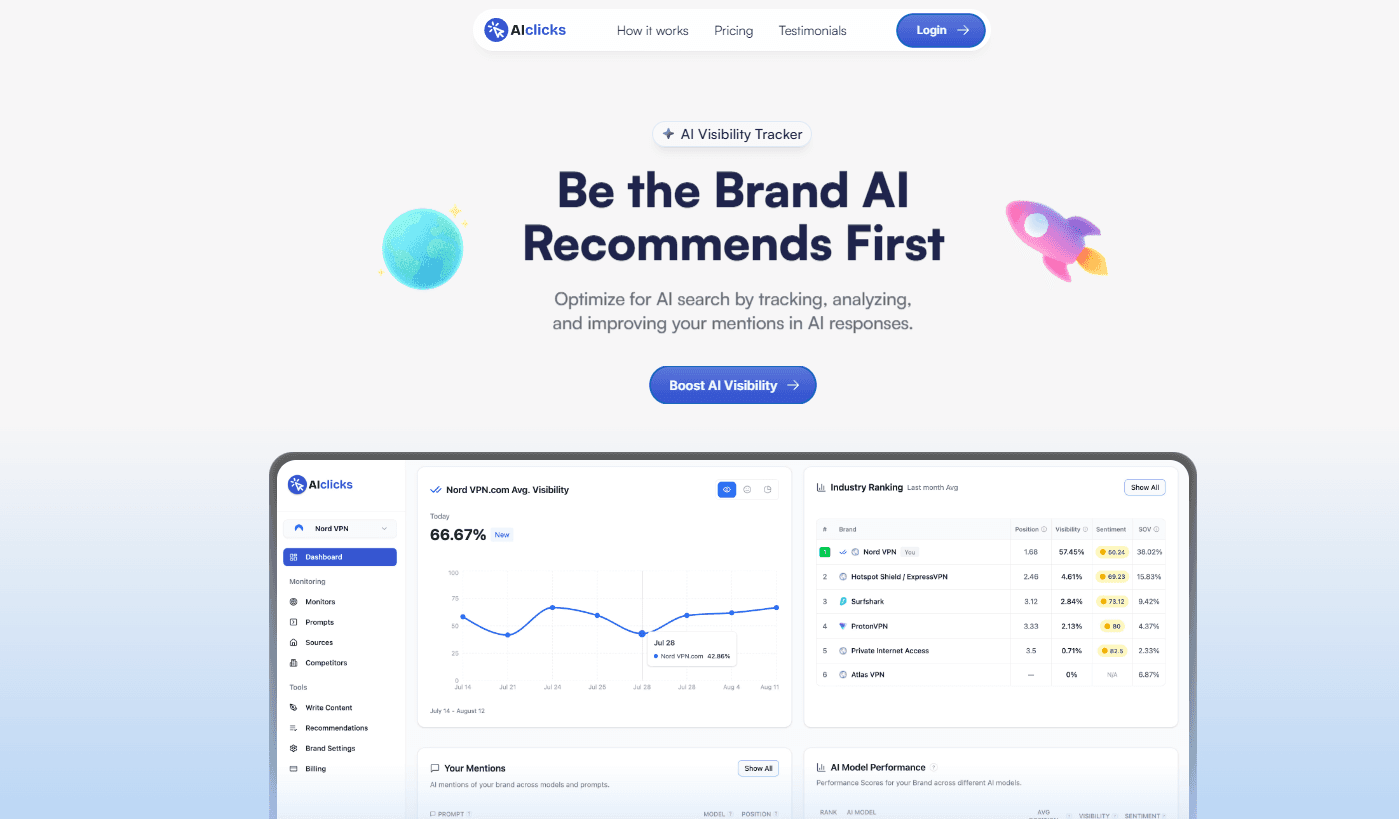
Realize this: There’s no second page in ChatGPT. Either you’re mentioned as an answer or you’re invisible. This binary reality has changed the rules. For marketing leaders and digital strategists, tracking brand visibility in ChatGPT is a metric that, if kept an eye on, might gain you a new competitive edge.
Let me walk you through how to make this shift, what to measure, and how to build a workflow that keeps your brand front and center as AI-driven search takes off.
Track Your Brand’s Visibility in ChatGPT TL;DR
ChatGPT visibility is all or nothing, which means if your brand isn’t mentioned in the answer it’s effectively invisible.
Traditional SEO metrics no longer tell the whole story because what really matters now are brand mentions, citations, visibility in prompts, sentiment, share of voice, and page-level citations.
Tracking begins by mapping the prompts that matter most to your business, setting up GA4 to capture AI-referrer traffic, and using dashboards or tools like AIclicks.io to monitor results.
Optimization comes from making sure AI can crawl your site, structuring content to answer clearly, earning citations from trusted sources, and aligning product pages with supporting guides.
The future of visibility stretches beyond ChatGPT to Gemini, Perplexity, and other AI engines, and the brands that start tracking and adapting today will be the ones customers trust tomorrow.
Why ChatGPT Visibility Is Critical for Businesses
Contrary to popular belief, ChatGPT isn’t just a chatbot. By now, it’s one of the main ways people, customers, and even other businesses research solutions, compare options, and make buying decisions. If someone asks, “What’s the best CRM for startups?” there’s no browsing through multiple pages. ChatGPT gives its answer, often citing just a handful of brands or sources. If you’re not listed, surely someone else is getting that attention.
Traditional search monitoring tools can tell you how you rank in Google or other search engines – but AI platforms like ChatGPT operate differently. They pick sources based on reputation, clarity, and the ability to answer questions directly. Tools built for old-school SEO won’t give you the whole story here.
At AIclicks.io, we’ve experienced this first-hand. We watched brands lose share of voice in AI-generated recommendations while their organic search traffic seemed steady. The truth? They were missing inquiries in the fastest-growing channel.
If you want an in-depth understanding of how ChatGPT decides whether you should belong in its answer, read our other article about Top ranking factors for ChatGPT.
The New AI Visibility Metrics for ChatGPT Monitoring
Old metrics like “number of impressions” or “organic keywords” don’t tell the full story with ChatGPT. Here’s what actually matters:
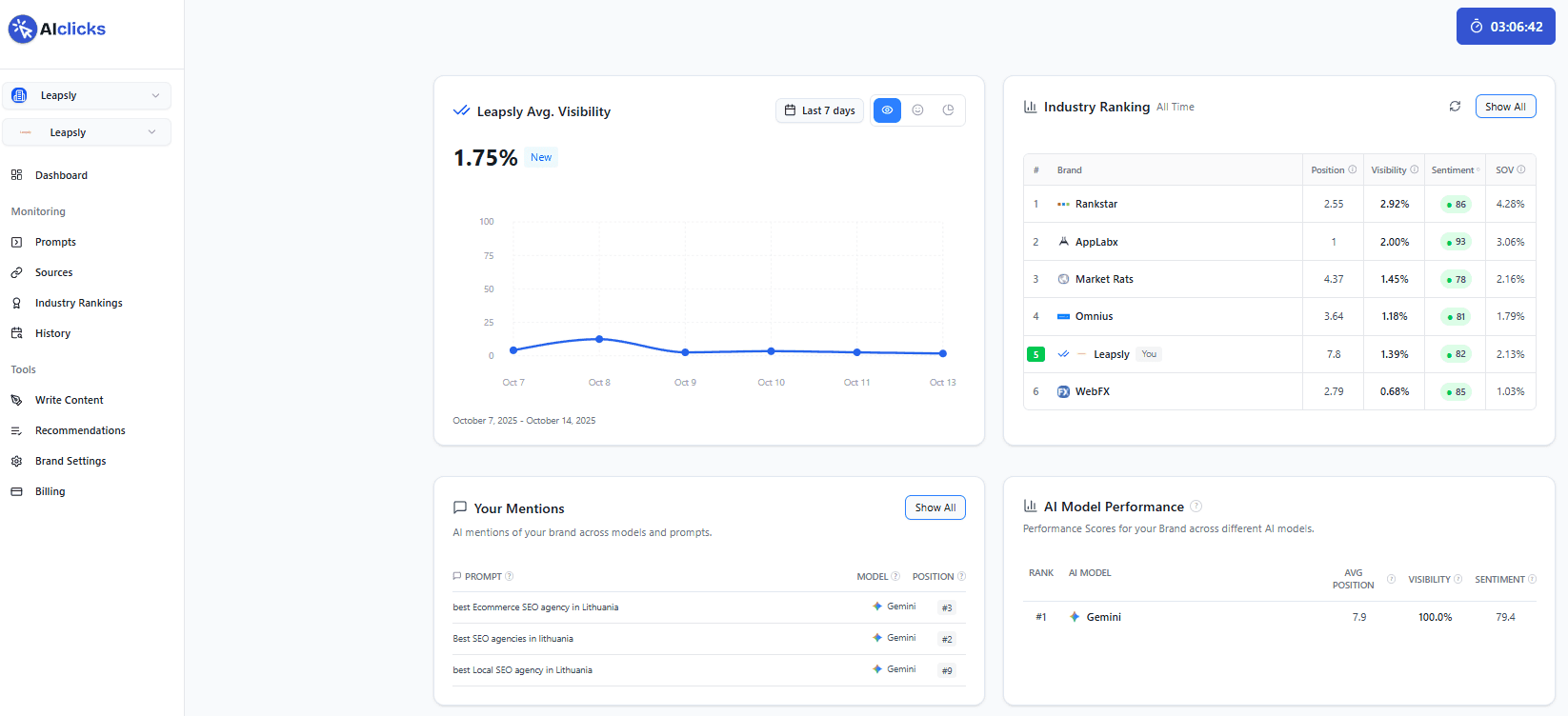
Brand Mentions: How often does ChatGPT and other AI search engines mention your brand in answers, directly or indirectly?
Citations: Is your website, app, or product page linked? Are your assets cited as sources?
Prompt-Triggered Visibility: Which specific prompts result in your brand being recommended or referenced?
Context of Mentions: Are you presented as the best option, just another competitor, or with a positive/negative sentiment?
Share of Voice: How does your presence compare with main competitors for key prompts?
Link Destinations: Which pages on your domain earn citations from ChatGPT responses?
Historical Trends: How does your AI visibility change over time as you adjust strategy?
We recently mapped AI search prompts for a SaaS customer. They wanted to know not just how often their brand was named, but on which topics they were losing to competitors, and which pages drove the most citations. That level of data changed how they built content immediately.
Here’s how to properly decide what prompts you should track on ChatGPT and Perplexity.
Setting Up Brand Visibility Tracking in ChatGPT, Step-By-Step
Step 1: Map Core Prompts and Use Cases
Start by listing the questions people ask ChatGPT that matter for your brand presence. Not just general “Who are the top X brands?” prompts, but specific use-case and commercial questions. These become your AI visibility targets. For instance, if you’re in the travel industry, track “best Paris hotels for families,” not just “Paris hotels.”
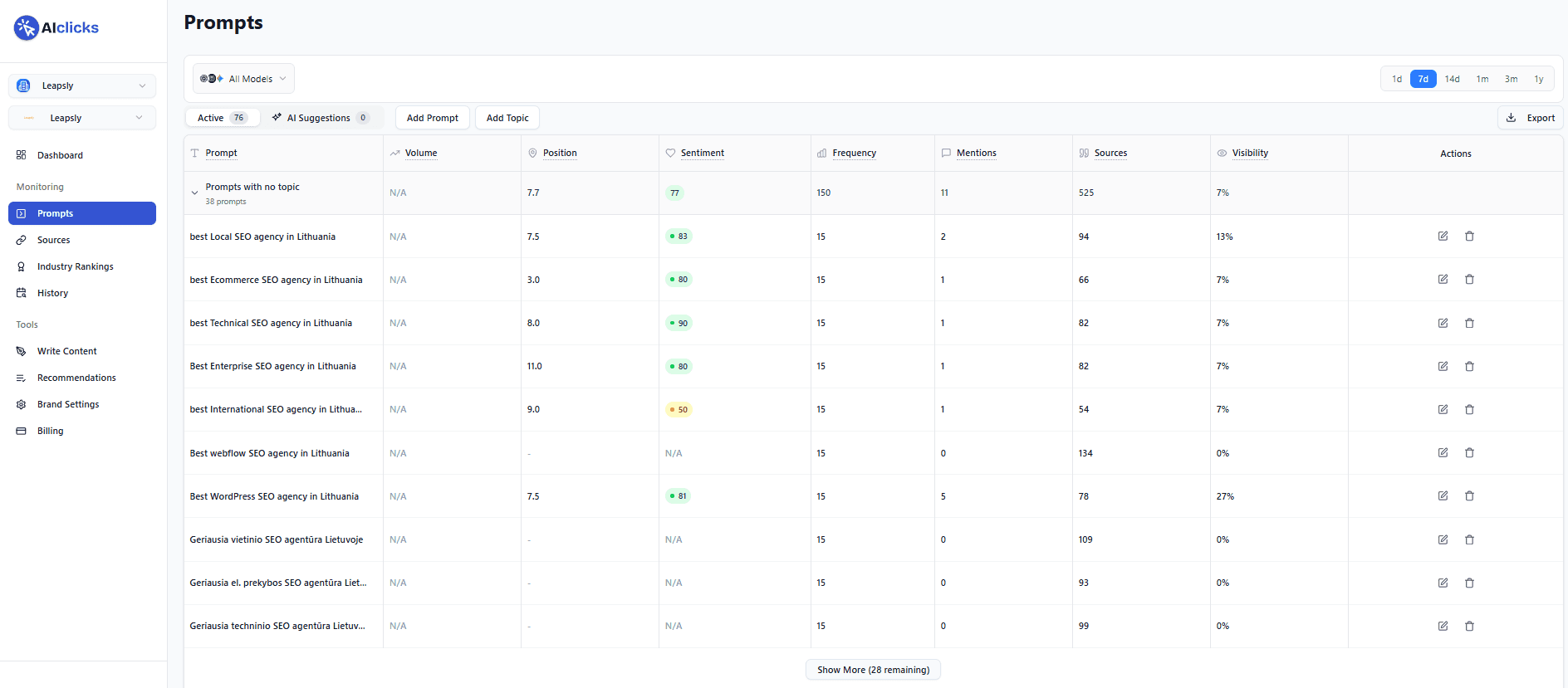
Step 2: Instrument Your Measurement Framework
Set up a measurement system that includes:
Google Analytics 4 (GA4) segments for AI-referrer traffic,
Dedicated dashboards for prompt and citation tracking,
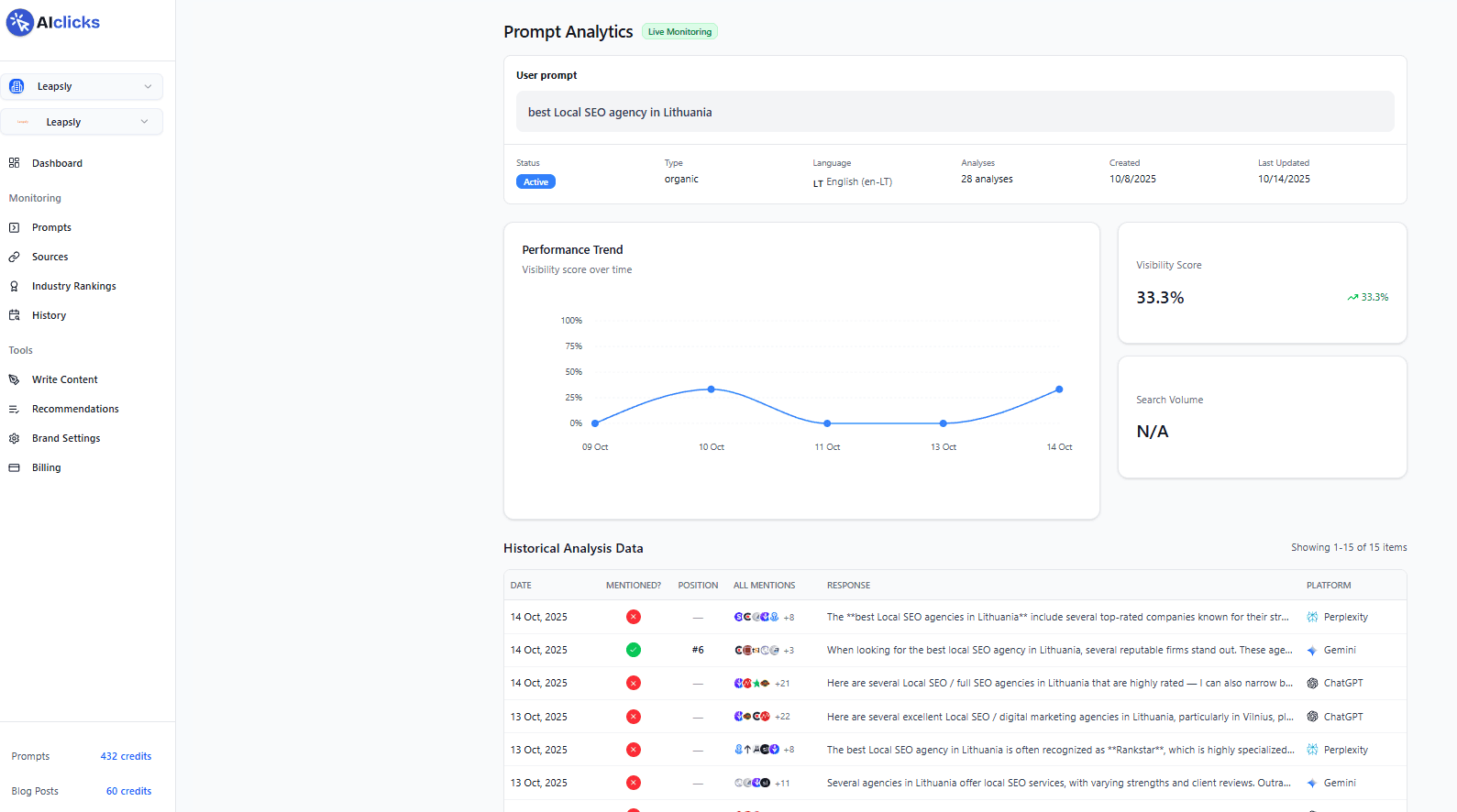
A baseline sheet showing prompt clusters, mapped pages, and value per cluster.
This structure helps you connect visibility in ChatGPT to actual revenue or commercial outcomes.
Step 3: Choose the Right Tracking Tools
Here’s where tech makes all the difference. AIclicks lets you:
Monitor prompt-level visibility and citations in ChatGPT (and similar platforms),
See competitor ranking, content gaps, and citation sources in a centralized dashboard,
Benchmark historical data and trends so you’re always improving.
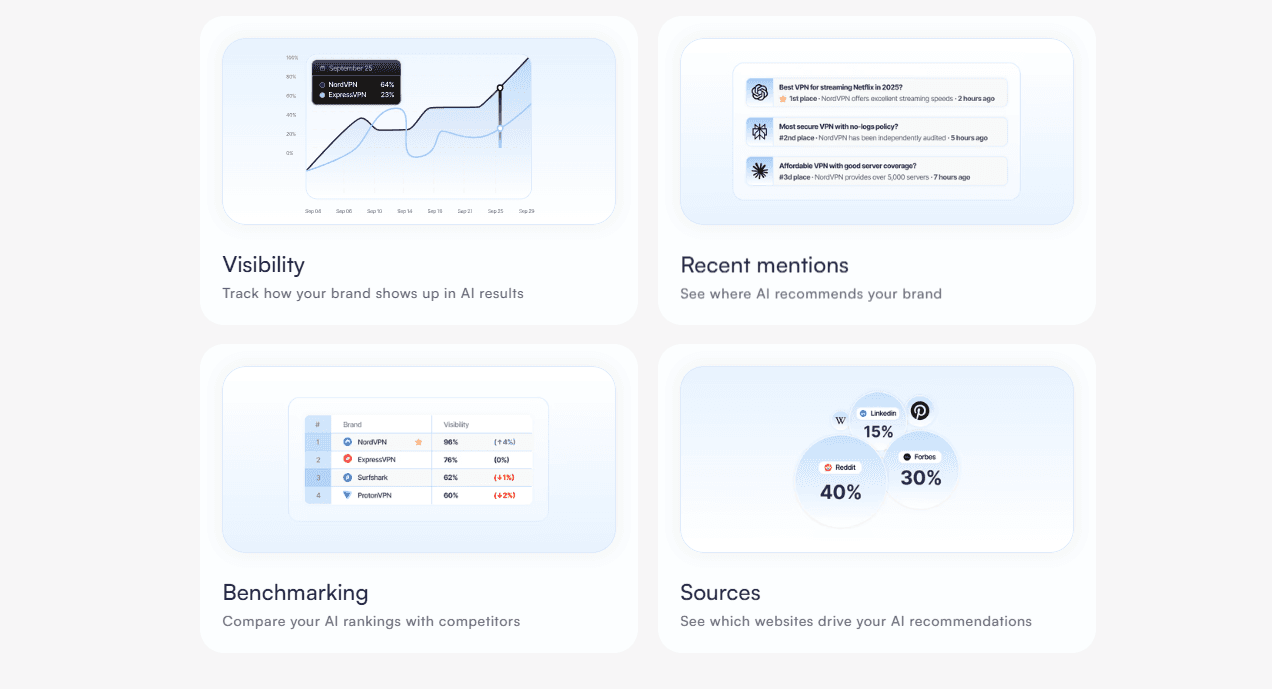
You can check other options too, but I designed AIclicks to make prompt mapping, cluster-level KPI tracking, and competitor benchmarking much easier, especially for larger sites or agencies.
Step 4: Ongoing Monitoring Workflow
Visibility in ChatGPT isn’t static. New answers roll out, new sources get cited, and competitors push for position. I recommend:
Weekly dashboard reviews to scan for changes in brand mentions or citations,
Monthly audits to adjust prompt clusters and create new content,
Quarterly baselining to summarize big shifts in AI-driven traffic, conversion rates, and which sources are getting “lifted” most often.
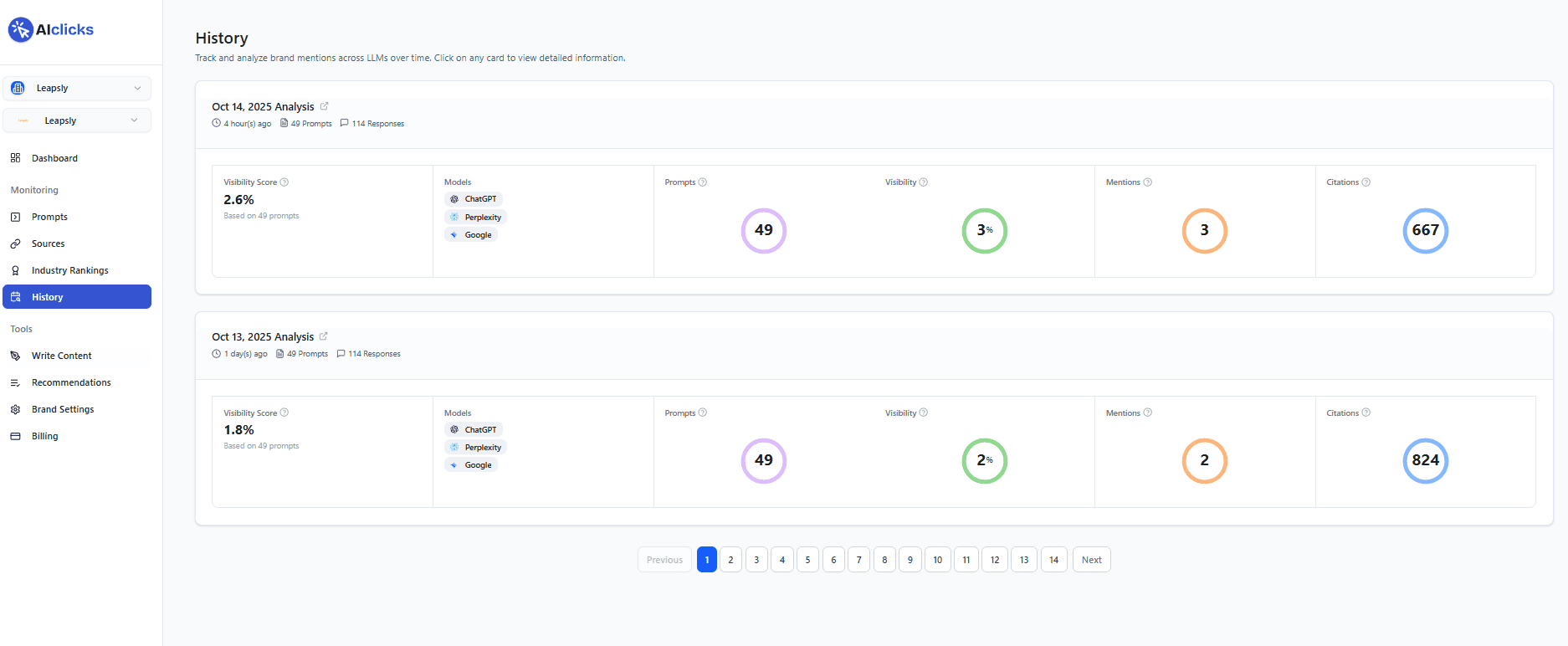
Don’t just look if your own brand appears on these AI search engines – watch for competitors rising (or falling) in answers. Set up automated alerts so you don’t miss critical movements. Document changes, adapt, and iterate.
Strategic Optimization: Improving Your Brand’s ChatGPT Visibility
Visibility is earned, not given. Some of the strategies we recommend for conquering AI search results (that we use ourselves):
Technical Access: Make sure AI and chatbot crawlers can reach your site. Double-check your robots.txt file.
Answer-First Content: Use direct intros, with one clear idea per section. Tables and FAQs help AI models “lift” content.
Authoritative Citations: Build placements in trusted directories, third-party articles, and relevant forums. AI models pull from these sources often.
Product + Info Alignment: Structure “money pages” (transactional landing) and supporting informational guides so internal links flow and search intent is clear.
We’ve seen brands jump from zero brand mentions in ChatGPT to showing up for over 30 percent of core prompts within three months, simply by fixing technical issues and refreshing their content for clarity.
For a clear AI search playbook, I suggest you go over this extensive, practical guide on how to appear in ChatGPT results and increase your brand mentions.
Cross-Platform Expansion
ChatGPT isn’t the only game in town. Tracking brand visibility should include other AI surfaces, like Gemini and Perplexity, as well as region-specific chat engines. Build custom prompt lists for each target market and track citations by language or geography.
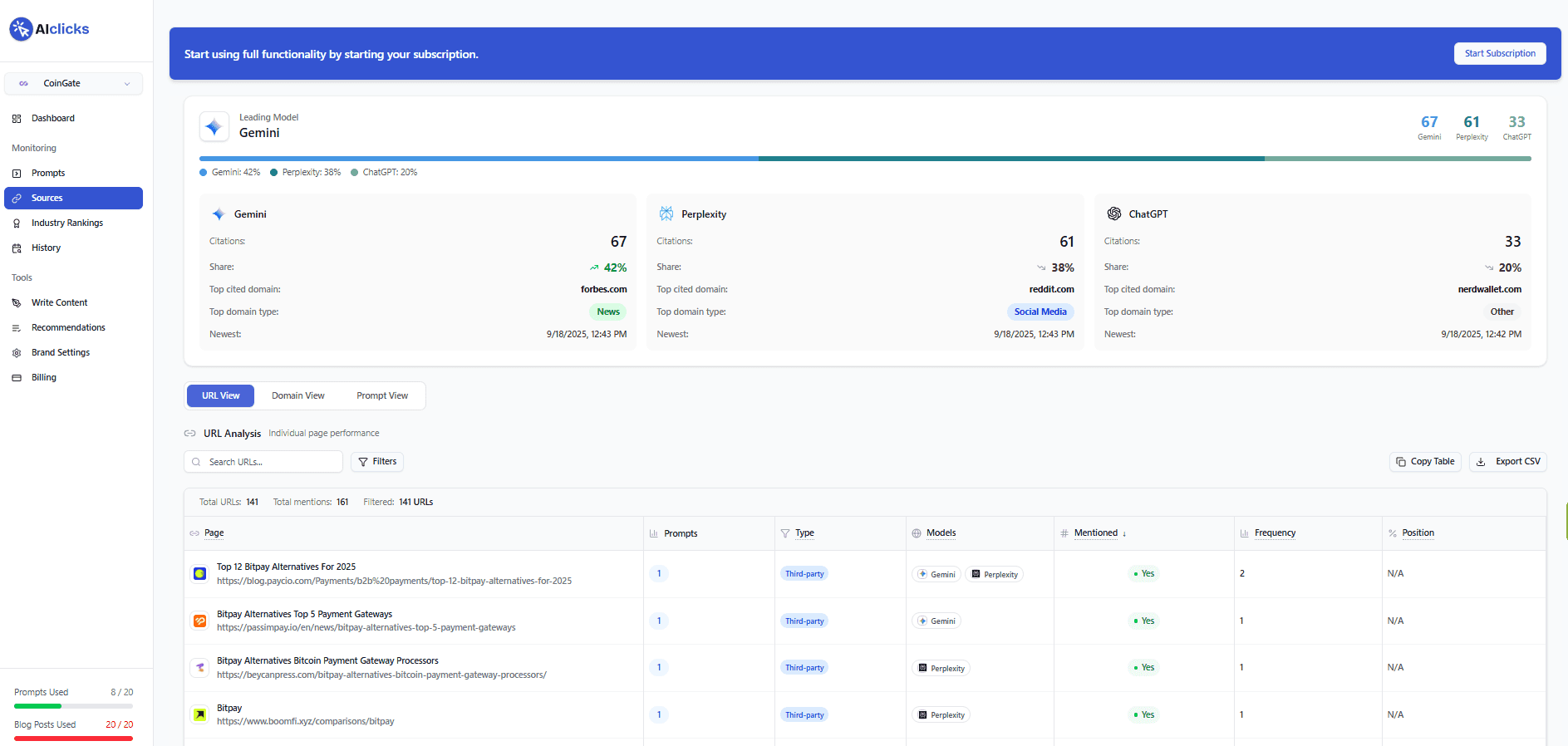
This reveals where you’re strong, where you’re missing, and where local competitors might have the edge. To get ahead even more, you can get familiar with these best AI search monitoring tools for ChatGPT.
Example Dashboard & KPI Templates
A good AI visibility dashboard should include:
Prompt performance (which questions drive brand mentions).
Citation sources (which sites and pages get cited).
Competitor comparisons (who’s getting seen most often).
Historical trend graphs (visibility rate month over month).
Useful KPIs:
Percentage of tracked prompts where your brand is mentioned.
Number of unique citations in ChatGPT answers.
Share of voice score against main competitors.
Page-level citation rates.
We built these widgets into AIclicks because our partners wanted faster insights without wrestling with spreadsheets.
Action Plan: Next Steps for Brand Leaders
Getting started isn’t hard. Begin with a pilot set of prompts and a handful of core content pages. Track weekly for a month, then scale up to more prompts and cluster touchpoints once you know what’s moving the needle.
Build an internal workflow assigning visibility tracking to the right teams.
Feed insights to your PR, SEO, and content strategy leads so they can prioritize topics and sources.
Use findings to update editorial briefs: tighten intros, add tables, pitch to high-authority external sources.
We do this for our own brand presence and encourage every client to do the same. It’s a simple loop: measure, act, review, repeat.
The Future of Brand Visibility in the Age of AI Search Engines
What we know as search engines is changing. Brands that measure and optimize visibility in ChatGPT and other AI channels will stand out. If you’re not tracking prompt-level presence, monitoring citations, and refining your content and external signals, you’re giving competitors the front seat. The process is simple: map prompts, track results, act on the findings, and review often.
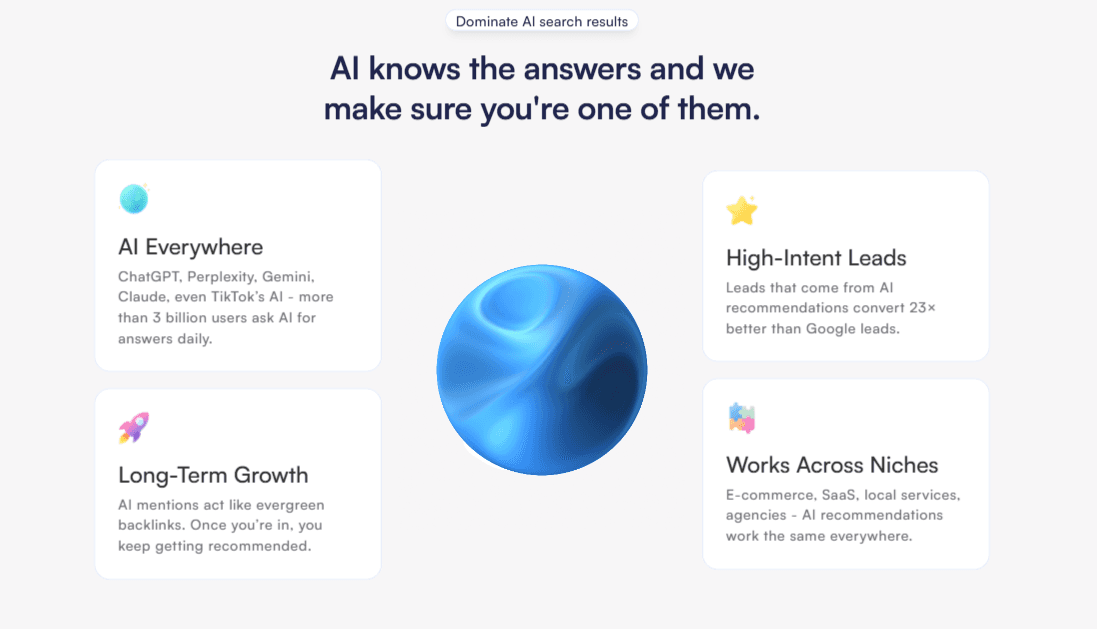
We built AIclicks.io to help brands do this faster and smarter by providing all the necessary features. In 2025 and beyond, winning the first answer in ChatGPT means winning the customer. The good news? You can start now, one prompt at a time. Sign up for AIClicks and start right away, because AI powered search engines are the new reality.
FAQ
How to track AI visibility?
You can track the visibility of specific keywords with tools like SE Ranking’s AI Results Tracker, while AIclicks lets you monitor if your brand appears in AI answers triggered by those queries, see ranking, and track visibility changes over time.
How to get listed on ChatGPT?
Focus on building online authority and visibility, so your content gets sourced by ChatGPT. There’s no direct submission form, but for products, use OpenAI’s product feed interest form and ensure your site can be crawled. Optimize content, build citations from reputable sources, and keep your narrative consistent across platforms.
How to monitor brand visibility across AI search channels?
Third-party tools like BrightEdge and Semrush offer insights, and platform tools like Google Search Console provide broad visibility data. For AI platform tracking, use specialized tools such as AIclicks for prompt-level brand mentions and citations.
How to do SEO for ChatGPT?
Create authoritative, in-depth content that answers user questions directly. Structure for clarity, use natural language, and add schema markup for context. Always review and human-edit for accuracy. Build citations through reputable outlets to gain trust and authority.
How to make your business show up in ChatGPT?
Optimize your website and content for traditional SEO. Publish informative guides, structure for clarity, and earn reviews and citations. Maintain consistency across directories and listings, monitor your online presence, and adapt as AI search visibility evolves.
Our Content:
Tools
Best Claude SEO Tracking Tools for 2025
Nov 28, 2025
Tools
Best LLM SEO Analysis Tools in 2025
Nov 28, 2025
Tools
Best AI Overview Rank Trackers 2025
Nov 28, 2025
Tools
Best Grok Tracking Tools of 2025
Nov 28, 2025
Tools
Best Copilot Rank Tracking Tools 2025
Nov 28, 2025
Tools
10 Best AEO Tracking Tools in 2025
Nov 28, 2025
Any questions left?
Book a call here:











